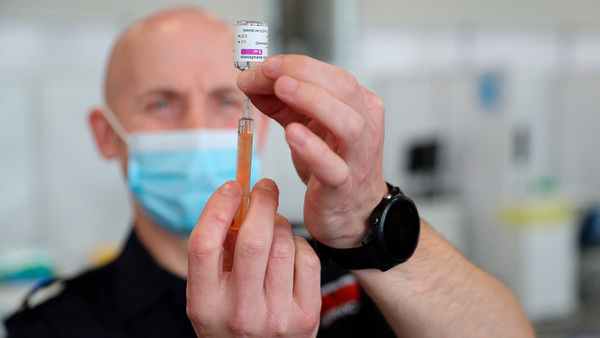
“We are all in this together” became a rallying cry during the COVID-19 pandemic in the United States, although a significant portion of the population is not “all in” when it comes to getting vaccinated.
While the phrase focuses on civilians, new research from the University of Notre Dame suggests that experts from varying fields need to work together to overcome the public health crisis and that science can benefit by using marketing strategies with vaccine holdouts, much like brands do with customers.
“Market Segmentation Strategies Can be Used to Overcome COVID-19 Vaccine Hesitancy and Other Health Crises” is forthcoming in the Journal of Consumer Affairs from Mitchell Olsen, assistant professor of marketing in Notre Dame’s Mendoza College of Business, along with Matthew Meng from Utah State University.
After the initial deployment of COVID-19 vaccines in early 2021, some public health officials and politicians believed that herd immunity could be achieved across the U.S. population by the Fourth of July. Although early vaccination rates seemed to indicate this was an achievable goal, inoculation rates began to plummet in the summer as those who were eager to receive a vaccine had already done so. More than 30 percent of U.S. adults still are not fully vaccinated.
The team conducted a national survey of vaccine holdouts to demonstrate how a market segmentation process can be beneficial.

“Our survey revealed important distinctions between four groups of COVID-19 vaccine holdouts regarding the nature and strength of the reasons behind their aversion to the vaccine and the solutions to which they are most open,” Olsen said. “We then discussed how organizations such as the CDC can enroll marketing strategists and consumer psychologists in future health crises.”
In May, the team conducted a nationally representative survey of 1,068 adults in the U.S. who were either unvaccinated or partially vaccinated and considered themselves unlikely to fully vaccinate themselves. All participants indicated how important 16 different reasons were in their decision to not become fully vaccinated. They also indicated how helpful 18 possible solutions would be in encouraging them to get fully vaccinated.
The results, including demographic profiles, were compared after respondents were categorized into one of four segments — unvaccinated refusers, unvaccinated hesitants, partial refusers or partial hesitants. The segmentation was based on whether the respondents are completely unvaccinated or partially vaccinated and whether they indicate they will definitely not or probably not receive the COVID-19 vaccine or the second dose, when applicable.
“It seems much of the public narrative has treated those who do not intend to fully vaccinate themselves as a homogenous group who should be approached with one-size-fits-all ‘solutions,’” Olsen said. “Clearly, that approach doesn’t seem to be working.”
Marketers have long recognized that consumers will evaluate the same product differently. They increase the acceptance of their products by recognizing these differences and tailoring the marketing mix in a way that better resonates with a particular segment of the population.
A market segmentation approach can make vaccination campaigns more effective by improving the source, content and/or placement of the message. For instance, the approach used today often involves government officials imploring the unvaccinated to get vaccinated through traditional media channels.
“Our national survey shows this approach may actually be counterproductive because, for some, a main reason behind not getting the vaccine is a lack of trust in the government,” Olsen said. “The more certain groups hear government officials imploring them to get the vaccine, the less likely they will be to do so.”
Market segmentation is ultimately about empathy, according to Olsen. It requires the researcher to truly listen to people and understand their underlying concerns and motivations so that they are able to respond in a relevant and impactful way. With vaccine holdouts, this can involve knowing their concerns, recognizing and validating those concerns and communicating in a way that addresses them without being patronizing.
“With those avoiding the vaccine because they don’t trust the government and feel the vaccines were developed too quickly, an effective messaging strategy may ensure the message does not come from a government official, but perhaps instead from a doctor or celebrity with whom the segment identifies,” Olsen explained. “The message could explain how safeguards were used in the development process to ensure the vaccine was developed safely despite its speed, and the messages could appear where vaccine holdouts are most likely to engage, such as a doctor’s office or in digital postings on pages related to COVID-19.”
According to Olsen, using a market segmentation approach will improve a product’s acceptance, whether it’s a toaster oven, laundry detergent or vaccine. And, likewise, utilizing marketing strategists and consumer psychologists from the onset of public health crises can improve results for public policy makers and health organizations.
Contact: Mitchell Olsen, 574-631-1734, molsen2@nd.edu
Originally published by at news.nd.edu on October 19, 2021.